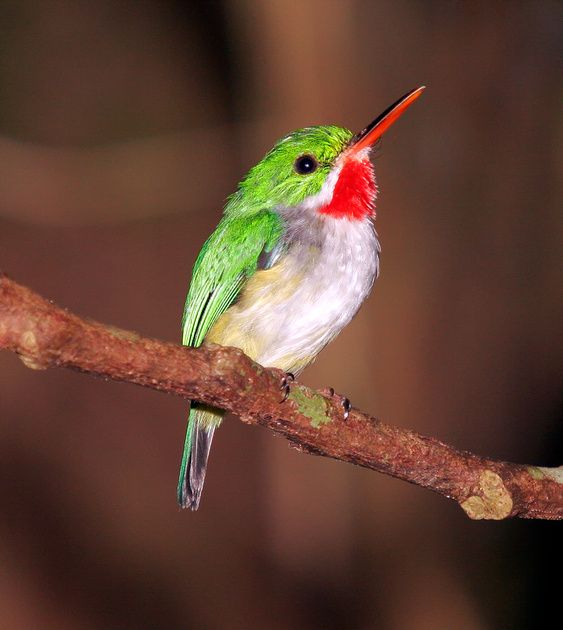The phainopepla or northern phainopepla (Phainopepla nitens) is the most northerly representative of the mainly tropical Central American family Ptiliogonatidae, the silky flycatchers. Its name is from the Greek phain pepla meaning “shining robe” in reference to the male’s plumage. Adult males are glossy black with red eyes and large white patches in the wings (visible in flight). Adult females are mousy grayish brown with red eyes; immatures are similar but with brownish eyes.
Phainopeplas are found mostly in desert washes that have mesquite, acacia, palo verde, smoke tree, and ironwood. In the United States, they are widespread in parts of the Sonoran Desert and Mojave Desert, as well as the Colorado Desert in California, usually below 6,000 feet elevation. They nest in these same desert trees and feed heavily on berries of the desert mistletoe, a parasitic plant of these trees. In California, where they are less common, they also occur in open oak-sycamore woodlands, chaparral, boxthorn scrub, and Joshua tree desert, especially where fruit is available. Generally, the species uses washes, foothills, and canyons more than open desert and grassland.
Phainopeplas are thought to be monogamous. They commence courtship in winter. Single males initiate a courtship flight, a circling flight often quite high in the air, where they may be joined by up to 8 more birds in a loose, circling flock. Often this display begins near dusk. As the nesting season approaches, males perform stunning displays over the nest site they choose, flying above it, then spiraling suddenly down with depressed tail and flaring wingbeats that display the striking white wing patches. Males select the nest site, usually in the fork of a tree or inside a mistletoe plant, about 6–16 feet above the ground. Most nests are in natural habitat, but nests in fruit orchards have been reported. Males construct a small, tidy, cup-shaped nest of twigs, stems, and plant fibers, held together with spider silk and lined with hair or down. Females sometimes add part of the lining. Nests measure about 4 inches across and 1.9 inches high, with the interior cup 2.5 inches across and 1.2 inches deep. Females visit several nest sites, where males entice them with courtship feeding (a few berries or insects). Males and females in Arizona defend nest sites and adjacent fruiting mistletoe with chases, threat postures (raised wings and hunched back), and harsh calls. In California, where fruit is more dispersed, males defend only the nest area itself during the nesting season. Where food is plentiful, Phainopeplas sometimes nest in loose colonies, with multiple nests in the same tree. After the nesting season, small flocks often gather where food is plentiful. Loose flocks form during migration into and out of the deserts in fall and spring, but most Phainopeplas are solitary in winter. Phainopeplas spend much of their day on a high perch, watching for intruders.
Phainopeplas eat mainly fruit, particularly desert mistletoe berries in fall through spring, as well as boxthorn, elderberry, redberry, juniper, and sumac fruits. They also eat flying insects captured in short, sallying flights or longer, sustained flights. Males and females defend separate winter feeding territories (about an acre in extent). Phainopeplas also glean bugs, beetles, and caterpillars from vegetation. Nesting birds feed young mainly insect prey, which is richer in protein than fruits. Phainopeplas rarely go to the ground to feed but do venture to the ground to gather nesting material. On the topic of preditors, Local snakes, larger birds of prey and carnivorous mammals are the primary enemies to these passerines.
Males sing a many-syllabled rambling song that includes a distinctive whistled wheedle-ah, given throughout the day from regular song perches. The most commonly heard call is a quiet wurp that is given in many contexts. A hard trilling churrrr is used mostly against other Phainopeplas intruding on territory; females give a softer version when soliciting courtship feeding. During nest building, both sexes click the bill rapidly when sitting on the nest, very similar to behavior in waxwings. Here is a link so that you can listen to this bird too.

